Note: This article discusses Goth music and the subculture surrounding it. For the art and literature that predated it, see Gothic.
Goth is a music-based subculture that was formed in the mid 1970s-to-early 1980s in the UK. Gothic rock originally derived from the post-punk movement at the time, which included acts, such as Joy Division, Bauhaus and Siouxsie and the Banshees. "Goth" as a term was originally used by music journalists to describe bands with dark subjects (the first of which was The Doors, with their track "The End").
Goth as a concrete music genre didn't exist until the release of the British band Bauhaus' debut single "Bela Lugosi's Dead” and was aided by the opening of The Batcave, a SoHo club were many early performers originated. Since the release of that track, many bands have formed to create and expand on the genre, intentionally or not (a lot of the original bands that are considered staples of Goth rock actually hate the label, especially musicians such as Andrew Eldritch of Sisters of Mercy).
The 80s Goth/Post-Punk scene reverberated around the world, as far and wide as America’s Deathrock, Germany’s Grufti, Spain’s Sinestro/Moldova, and Japan’s pre-Visual Kei Goth rock. It only continued and continues to grow in its influence.
Today, Goth still thrives as an underground subculture with many organized events and festivals (most popular is the annual Wave-Gotik-Treffen, or WGT for short, which takes place in Leipzig, Germany).[1]
It is one of the four high school stereotypes popularly used to classify students, along with Jock, Nerd, and Preppy.
Music[]
Goths agree that the most important aspect within the subculture is the music. Goth music started from Post-Punk bands like Joy Division, Siouxsie and the Banshees, and Bauhaus. The UK scene was where the subculture gained the most traction, with locations such as The Batcave enforcing the community's love of the music (the US and the rest of the world also had their own often overlooked Goth scenes).
While it's debated on what genres are classified as goth, there are five main subgenres that are agreed upon as being "Goth." These include:
Gothic rock (alternately called Goth-Rock) is the original genre that kicked off the goth subculture we know today. As mentioned above, the first goth-rock track is agreed upon to be "Bela Lugosi's Dead" by Bauhaus. This genre includes "scything" guitars, melodic basslines and minimal/sparse percussions. Second-wave goth rock is harder sounding, while still maintaining the definitive goth-rock sound (a famous example of second-wave goth-rock would be The Sisters of Mercy's "This Corrosion"). Goth rock bands include Bauhaus, Siouxsie and the Banshees, The Cure, Southern Death Cult, and The Sisters of Mercy. Example.
- Deathrock, the United States rendition of Goth, specifically formed in the West Coast during the 80s. Deathrock was originally formed straight from the Hardcore Punk movement, and this can be heard in it's music. Deathrock music is the loudest and fastest of all the goth genres, utilizing more guitar distortion and faster drums. Lyrical content can either be moody like Christian Death, or more cheesy and whimsical like the British Alien Sex Fiend (hence, its not uncommon for a lot of Deathrock bands to also be classified as Horror Punk too). Essentially, deathrock can easily be described as a blend of Post-Punk and Horror Punk. Deathrock would eventually merge with the UK Goth scene, and therefore be closely connected to the goth scene from there. A few deathrock bands include Alien Sex Fiend, Christian Death, 45 Grave and Specimen. Example.
- Darkwave, a more synth heavy version of Goth-Rock. Being inspired by the different "-wave" scenes at the time, darkwave combined the established genre of Goth Rock with more electronic instruments, such as synths and drum machines, although acoustics were still used alongside. What was then made was a combination of Post-Punk and Synthpop. Darkwave is still a very prominent part of the goth subculture, with many modern goth bands adapting the style of this particular genre, such as Lebanon Hanover, Clan of Xymox, Suspiria, and more. Example.
- Coldwave. Forming from the late-1970s French Post-Punk scene, Coldwave takes Darkwave and electrifies it even more. Like it's name would suggest, Coldwave has a cold and minimal sound with it's music, making use of synths and other electronic machines much like other "-wave" genres. Although it didn't gain significance during its inception, coldwave would later go on to become more prominent on the scene during the late 1990s and early 2000s worldwide. An example of a Coldwave band could be Molchat Doma. Example.
- Etherealwave aims to combine the electronics of Darkwave with the moody atmosphere of regular Goth Rock and Post-Punk. Etherealwave has been described as dreamy and otherworldly by listeners of the genre. A reverbed and echo-y guitar is a staple of the genre, which is what creates the dreaminess of the etherealwave genre. Etherealwave gave birth to other genres such as Shoegaze and Dream Pop, with bands such as Cocteau Twins being listed as originators of these genres. Etherealwave bands include Lycia, Trance to the Sun and Autumn’s Grey Solace. For a related music genre, check out the Shoegaze page. Example.
For more information and examples, please refer to this video.
Some genres are less-prevalent, or goth-aligned. These genres include:
- Minimalwave is the most simplistic sounding of the goth genres. Minimalwave strips down the complexity of the other genres to create an almost artificial sound, hence the "minimal" part. A key aspect of minimalwave is the simplicity of the instrumentation, both electronically and acoustically. This genre could be described as avant-garde by most. Example.
- Post-punk is the genre which goth rock and its sub genres formed from. To note, all goth rock is post-punk, but not all post-punk is goth. Post-punk bands include Joy Division, Wire and Talking Heads. To get an extensive description of post-punk, refer to this page. Example of goth-aligned post-punk.
- Grey rock is what the Portuguese goth scene refers to post-punk and gothic rock as. As such, these bands are exclusively Portuguese only. More information can be found here.
For playlists and beginner albums to goth, look at the Resources tab below.
Fashion[]
Gothic fashion is a clothing style marked by conspicuously dark, mysterious, antiquated, and homogeneous features. It is mostly worn by members of the Goth subculture. A dark, sometimes ghastly fashion and style of dress, typical Gothic fashion includes an unhealthy complexion with dyed black hair, dark lipstick, and dark clothing. Both male and female goths can wear dark eyeliner and dark nail polish most especially black. Styles are often borrowed from punk fashion, Victorians, Edwardians, and Elizabethans.
Like punks, gothic fashion is mainly about DIY and thrifting clothes (its highly encouraged, even). Secondhand-black clothes, handmade jewelry, modifications on tights and jeans, and jackets with patches are some of the more common staples of DIY'd gothic fashion. Most expensive of the common accessories are the shoes (usually combat boots or winklepickers, the latter being a joke among goths that it is THE Goth shoe). However, there do exist some Goths who prefer to shop from the vendors below.
It’s important to remember though that not all Goths dress the same or even wear all-black. What pulls them together is their appreciation for Goth Rock, Deathrock, Darkwave, Ethereal Wave, and other key Goth music genres.
Since the second biggest part of Goth is the fashion, a lot of styles were influenced by the subculture's looks. As a result, a plethora of dark fashion styles exist today. They are divided between those with a genuine presence in the musical scene, and those that are just generalizations:
Criticism[]
With a lot of alternative scenes, comes a lot of preconceived notions and assumptions. Goth is no exception to this.
Although the Goth subculture is sometimes perceived as being intrinsically related to Satanism or atheism, religious beliefs in the community vary. As it is only a music and aesthetic form, anyone, from any religion or political belief system can be in the scene.
It’s also important to note that Goth in and of itself is not a kink subculture, and beliefs regarding sexuality vary among members of the community.
While fashion is an important aspect of the goth subculture, music is typically regarded as the the most important aspect of the subculture. Regardless, several genres and subcultures are mistaken for Goth.
These genres include, but not limited to, Nu-metal (Korn, Slipknot, Evanescence), Pop punk (Green Day, My Chemical Romance, The Queers), Dark pop (Billie Ellish), Emo trap/Emo rap (XXXTentacion, Lil Peep, GothBoiClique, etc.), Grunge (Nirvana, Smashing Pumpkins, Pearl Jam, etc.),
(*while it was based off the original darkwave sound, it is a genre that has strayed away from its post-punk roots, and more into folk. Thus, most goths do not count this as a goth genre.)
For information on goth music, refer to the Music section, see Trad Goth and Deathrock.
Subgenres[]
- Bubble Goth
- Carbaret Goth
- Corp Goth
- Cybergoth
- Fetish Goth
- Gothabilly
- Gothic Lolita
- Goth Punk
- Hippy Goth
- Military Goth
- Nu-Goth
- Pastel Goth
- Perky Goth
- Romantic Goth
- Trad Goth
- Vampire Goth
- Victorian Goth
- White Goth
Resources[]
External links to help get a better understanding of this aesthetic.
Communities[]
Playlists[]
- Dark & Gothic Official Spotify Playlist
- Goth Essentials Spotify playlist by Derrick Johnson
- Goth/Darkwave Spotify playlist by Beach Fossils
- Gothic Rock Spotify playlist by Timothy Walschaerts
- The Numero Guide to Cold Wave & Minimal Synth by Numero Group
- The Sound of Ethereal Wave by The Sounds of Spotify
- Goth Music by Bridget
- Fast/Catchy Goth Music by Bridget
- Goth Song Titles That are Women's Names by Bridget
- Goth Christmas by Bridget
- goth songs about goths by Bridget
- catholic goth by Bridget
- witchy goth by Bridget
- feminist goth by Bridget
- Goth Love Songs by Bridget
- Musique Gothique en Français by Bridget
Beginner Albums to Goth[]
- In the Flat Field by Bauhaus
- First and Last and Always by The Sisters of Mercy
- Disintegration by The Cure
- Juju by Siouxsie and the Banshees
- Acid Bath by Alien Sex Fiend
- Ehtazi by Molchat Doma
Goth Youtubers and Podcasts
- Cadaver Kelly/Gothy Roundtable
- Angela Benedict
- Of Herbs and Altars
- Accumortis
- Madi Danger
- Cemetery Confessions
- DramaKween
Blogs[]
Vendors[]
- BlackCraft Cult
- Disturbia
- Empty Society
- Goth Aesthetic
- Goth Mall
- Joely Ball Home
- Lip Service
- Mysticum Luna
- New Rock
- Punk Rave
- Stay Cold Apparel
- Synthicide
- Underground
Gallery[]
References[]
- ↑ Goth subculture | Wikipedia
- ↑ Jeremy Gordon, October 17, 2017, 'MGMT’s Comeback Single “Little Dark Age” Is Grim And Playful' - Spin


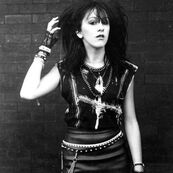

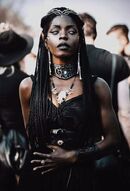






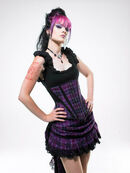

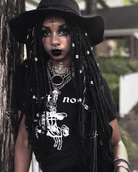
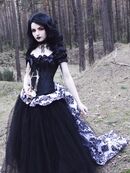


![MGMT - Little Dark Age (Video) (20 KB) ''...the band appears dressed up as goth kids...''[2]](https://static.wikia.nocookie.net/aesthetics/images/5/5d/MGMT_-_Little_Dark_Age_%28Video%29/revision/latest/scale-to-width-down/231?cb=20220506185551)
